Transforming your living space into a green sanctuary is like painting with nature’s own palette. You’ll discover ten distinctive ways to incorporate plants into your home’s design, from striking vertical gardens that command attention to minimalist shelf displays that maximize space. Whether you’re working with a compact apartment or a spacious house, these plant-styling techniques blend form and function to create an environment that’s both trendy and tranquil. Let’s explore how each approach can revolutionize your space.
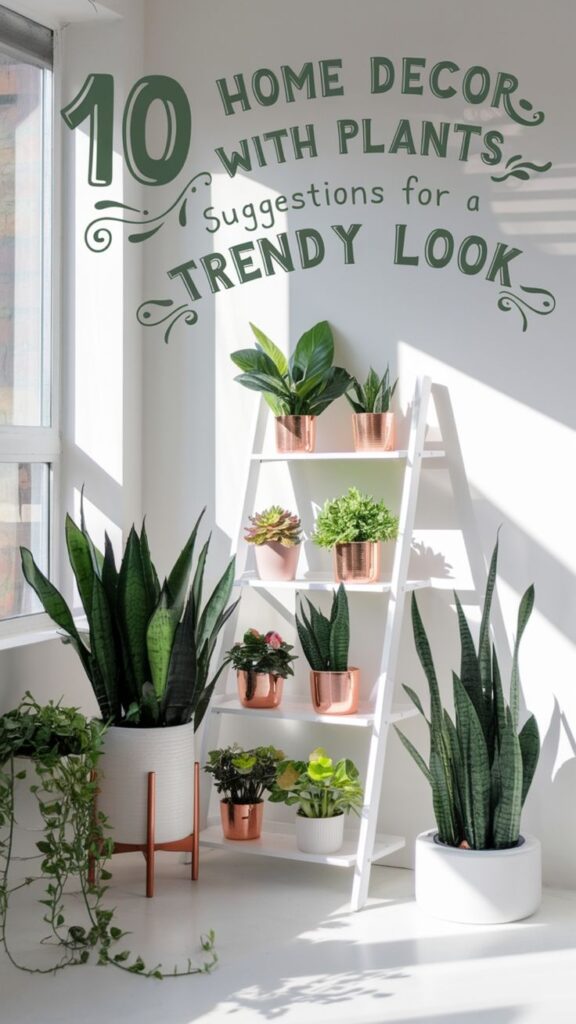
Contents
- 1 Vertical Garden Walls for Modern Living Spaces
- 2 Minimalist Plant Shelving Systems
- 3 Suspended Macramé Plant Displays
- 4 Statement Floor Plants as Focal Points
- 5 Desktop Terrariums for Workspace Style
- 6 Mixed-Height Plant Groupings
- 7 Window Sill Herb Gardens
- 8 Floating Plant Corners
- 9 Botanical Room Dividers
- 10 Contemporary Plant Stand Arrangements
Vertical Garden Walls for Modern Living Spaces
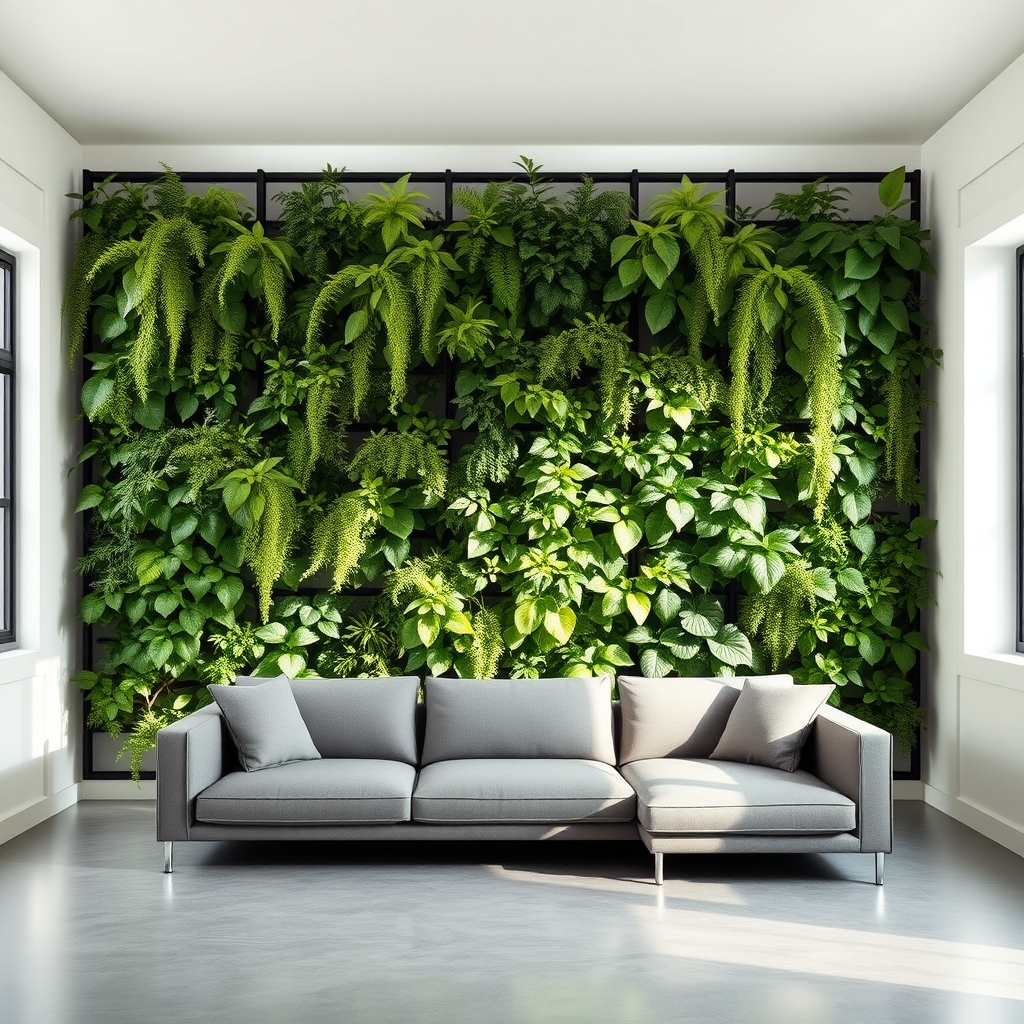
Vertical garden walls transform ordinary interior walls into living tapestries of greenery, creating dramatic visual impact in modern living spaces.
These installations feature plants arranged in vertical panels or modular systems, often incorporating different varieties of ferns, succulents, moss, and trailing vines. The distinctive design allows plants to grow upward rather than outward, maximizing space efficiency while providing natural air purification.
Key features include:
- Modular planting systems with built-in irrigation
- Mix of texture and colors through varied plant selection
- Space-saving design ideal for urban environments
- Double function as natural art installation and air purifier
- Customizable patterns and layouts to match interior design
- Professional or DIY installation options
- Low-maintenance plant options available for busy homeowners
The structure typically consists of a framework attached to the wall, complete with growing medium, waterproofing, and automated watering systems to ensure proper plant health and minimal maintenance requirements.
Minimalist Plant Shelving Systems
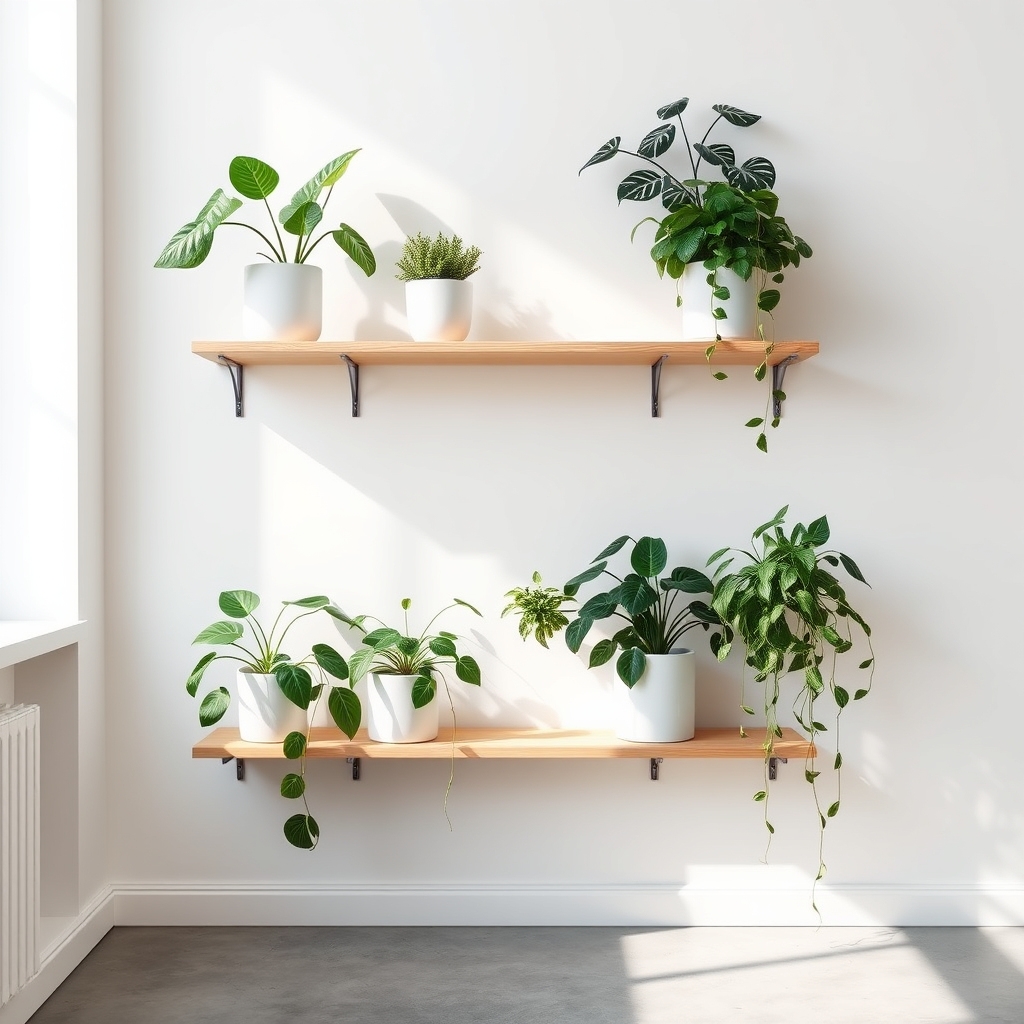
Minimalist plant shelving systems feature clean lines, simple geometric shapes, and uncluttered designs that focus on functionality.
These wall-mounted or free-standing units typically combine metal, wood, or acrylic materials in neutral colors like white, black, or natural wood tones. The shelves often appear to float on walls or utilize thin brackets and supports to maintain a light, airy appearance.
Key characteristics include:
- Open-concept design with ample negative space
- Multiple tiers arranged in symmetrical or asymmetrical patterns
- Slim profiles and streamlined construction
- Modular components that can be arranged flexibly
- Built-in drainage solutions or removable plant trays
- Space-efficient vertical layouts
- Minimal ornamentation or decorative elements
These shelving systems accommodate various plant sizes while maintaining a sophisticated, contemporary aesthetic that complements modern interior design styles.
Suspended Macramé Plant Displays
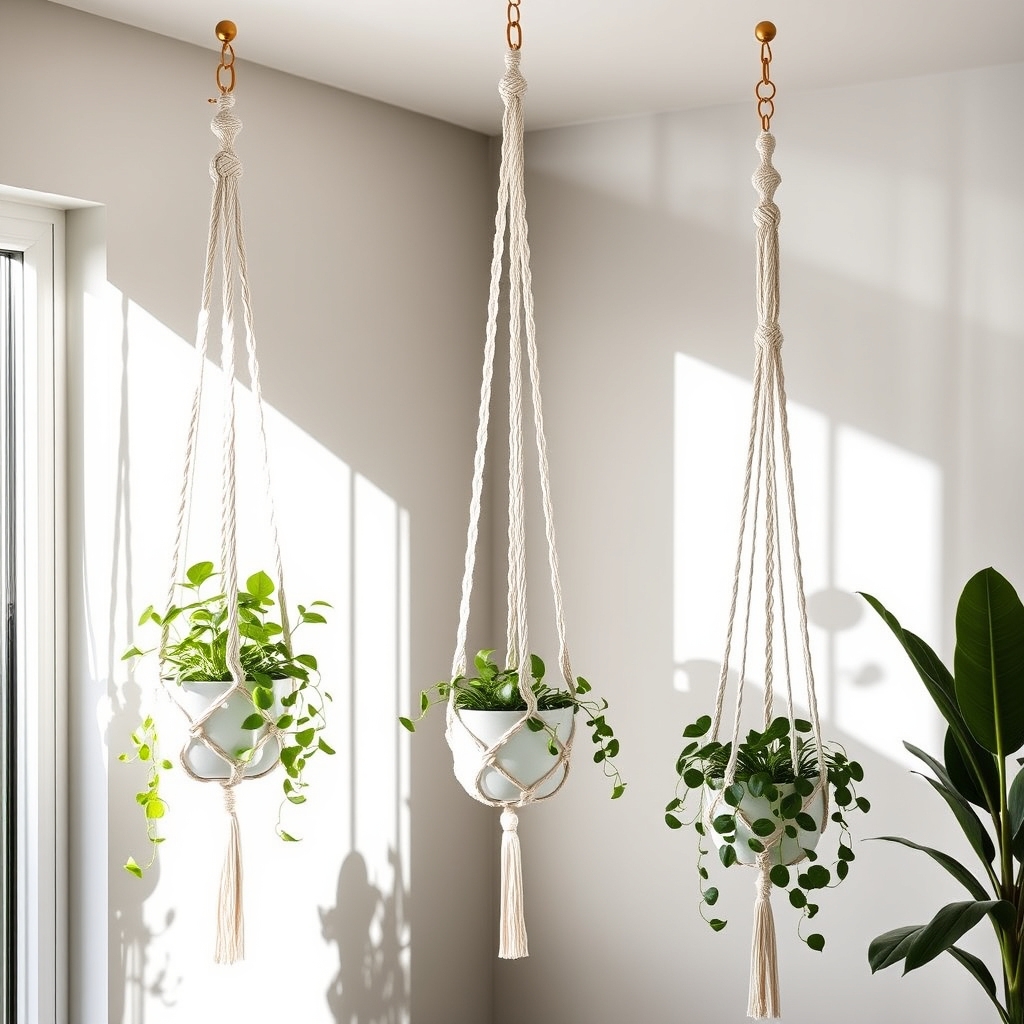
Suspended macramé plant displays combine decorative knotted rope patterns with hanging planters to create eye-catching vertical garden elements.
These handcrafted holders feature intricate weaving patterns using cotton, jute, or synthetic cord, suspending plants from ceiling hooks or wall brackets.
The design typically includes a series of knots and braids that form a net-like cradle to hold plant pots, often ending in decorative tassels or beads.
Macramé hangers can accommodate various pot sizes and work especially well with trailing plants like pothos, spider plants, or string of pearls.
The bohemian-style displays add texture and dimension to rooms while maximizing space and creating visual interest at different heights.
Statement Floor Plants as Focal Points
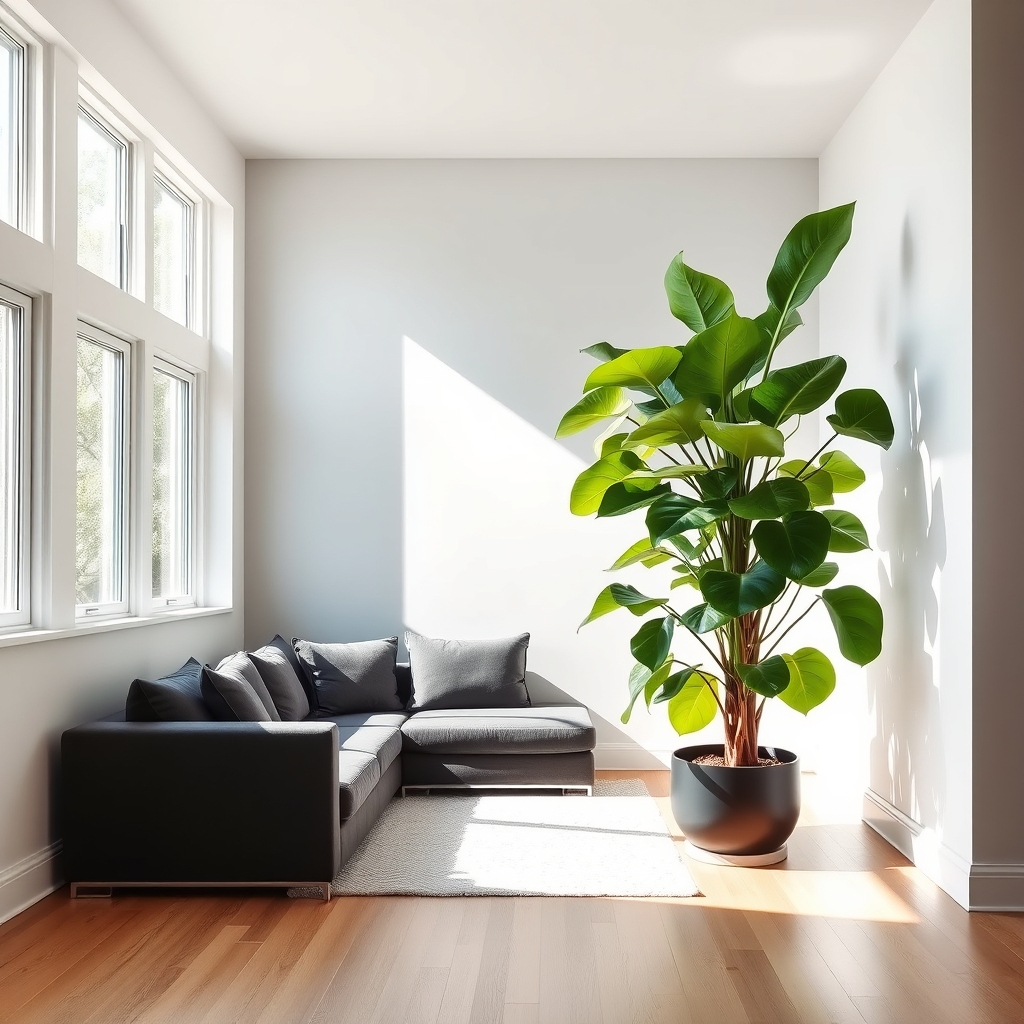
Statement floor plants serve as striking visual anchors in room design, commanding attention through their substantial size and dramatic presence.
These large-scale plants typically stand 4-8 feet tall and feature bold, architectural forms that naturally draw the eye. Popular choices include Fiddle Leaf Figs with their broad, violin-shaped leaves, Bird of Paradise with fan-like foliage, and towering Snake Plants with their strong vertical lines.
Positioned strategically in corners, beside sofas, or flanking entryways, these plants transform empty spaces into dynamic focal points.
Their height creates vertical interest while their substantial mass helps define and balance room proportions.
The organic shapes and rich greenery of statement floor plants add a living sculptural element to interior spaces, softening hard architectural lines while maintaining visual impact.
Desktop Terrariums for Workspace Style
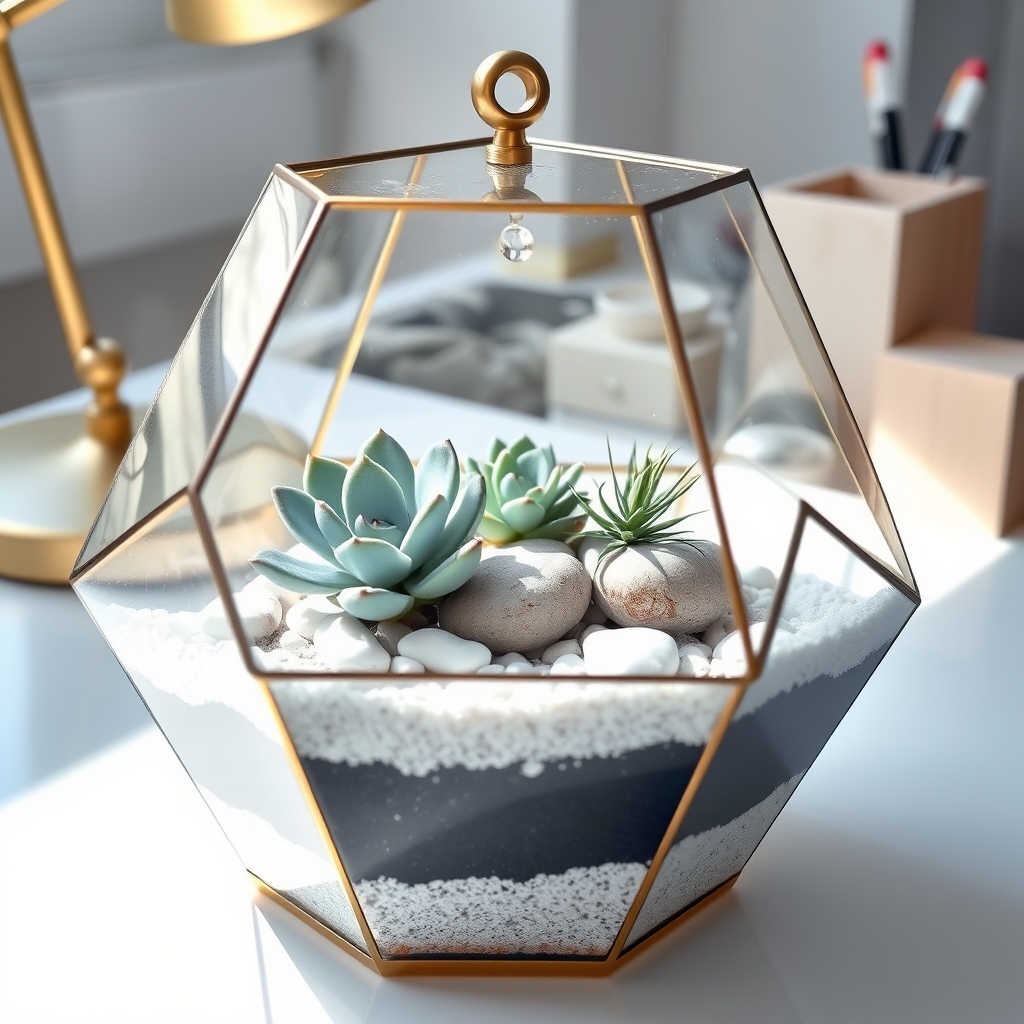
Desktop terrariums blend functionality with natural beauty, creating miniature ecosystems that fit perfectly in workspace environments.
These small glass containers house carefully arranged combinations of low-maintenance plants, pebbles, and decorative elements. Typically ranging from 4-12 inches in height, these enclosed or partially enclosed gardens feature succulents, air plants, or moss varieties that thrive in contained environments.
Unique features include:
- Self-sustaining moisture systems
- Layered substrate designs with activated charcoal and sand
- Compact footprint suitable for desk corners or shelves
- Clear glass walls providing 360-degree plant visibility
- Customizable arrangements with stones, figurines, or colored sand
The aesthetic appeal of desktop terrariums lies in their ability to bring structured nature into professional spaces without requiring extensive maintenance or taking up significant room.
Mixed-Height Plant Groupings
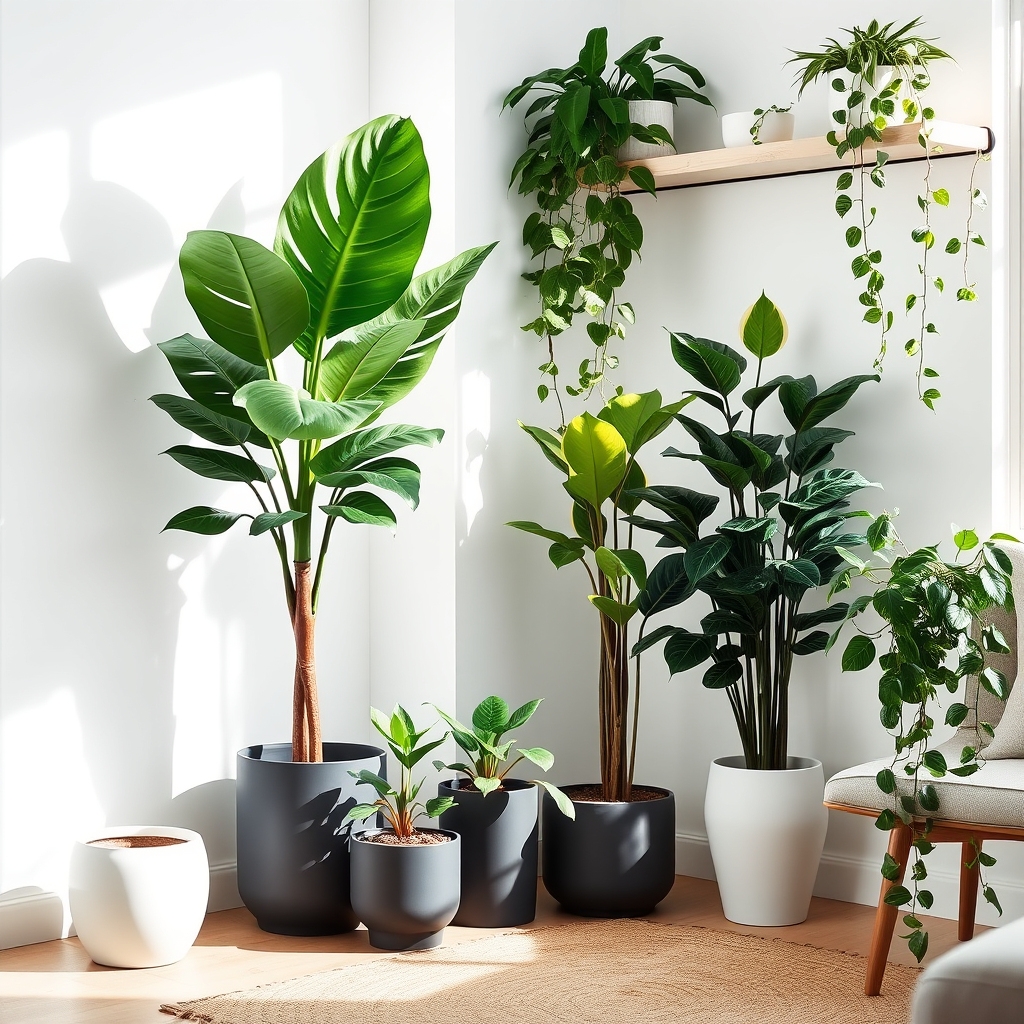
Mixed-height plant groupings create dynamic visual displays by combining plants of varying sizes and heights in a single arrangement.
Tall plants like floor-standing palms or fiddle leaf figs serve as anchor points, while medium-height plants such as snake plants or monstera fill the middle ground.
Smaller plants and trailing varieties occupy lower levels and tabletops, creating a layered, cascading effect.
This arrangement mimics natural plant growth patterns and adds depth to interior spaces, drawing the eye through different vertical planes while maximizing available space.
The contrasting heights prevent monotony and create interesting shadows and silhouettes throughout the day.
Window Sill Herb Gardens
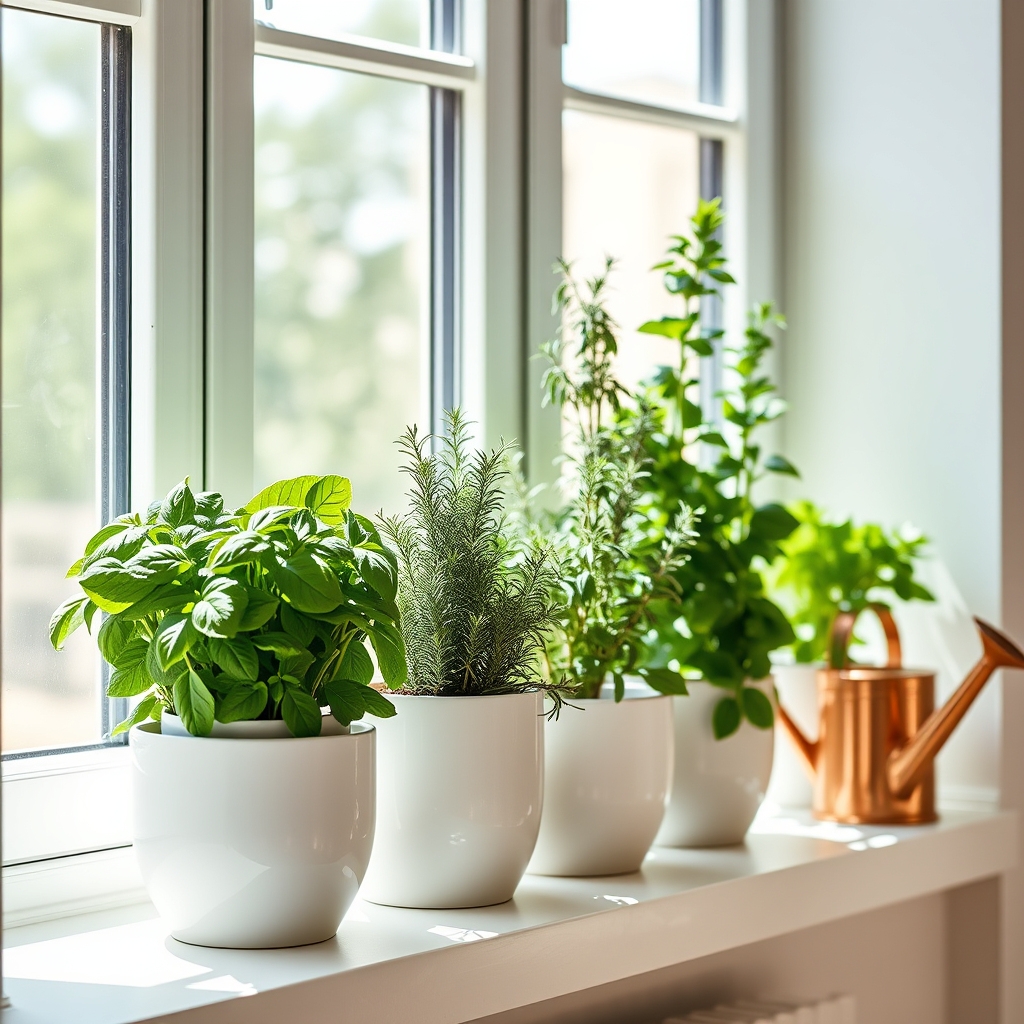
Window sill herb gardens transform ordinary windowsills into functional growing spaces where fresh culinary and aromatic herbs thrive.
These compact gardens typically feature small pots or rectangular planters arranged along interior windowsills, taking advantage of natural sunlight. Common herbs like basil, thyme, mint, and rosemary grow in individual containers, creating a living green display that’s both decorative and practical.
The arrangement often includes different-sized containers, plant markers, and proper drainage systems to protect windowsills.
These gardens serve dual purposes: adding natural greenery to the home’s decor while providing fresh herbs for cooking. The setup requires minimal space and brings the garden experience indoors, making it ideal for urban dwellers or those with limited outdoor space.
Floating Plant Corners
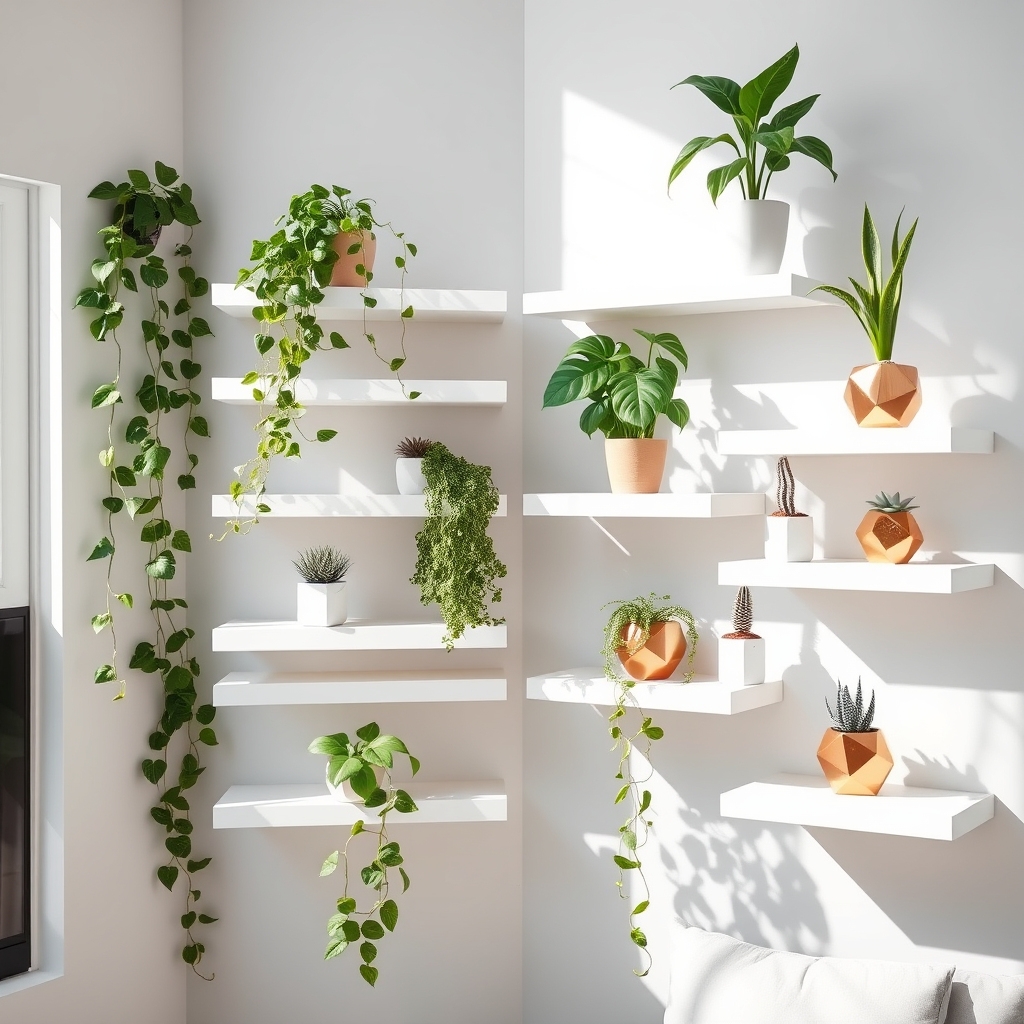
Floating plant corners transform empty wall spaces and room corners into vertical gardens using mounted shelves, hanging planters, and suspended containers at varying heights.
These arrangements create the illusion of plants floating in mid-air, adding depth and visual interest to otherwise unused spaces. Plants cascade downward or grow upward from different levels, utilizing a combination of wall-mounted brackets, macramé hangers, and invisible floating shelves.
The setup maximizes floor space while drawing the eye upward, making rooms appear larger and more dynamic. Common elements include trailing plants like pothos or string of pearls, geometric wall planters, and minimalist shelf designs that keep focus on the greenery rather than the hardware.
Botanical Room Dividers
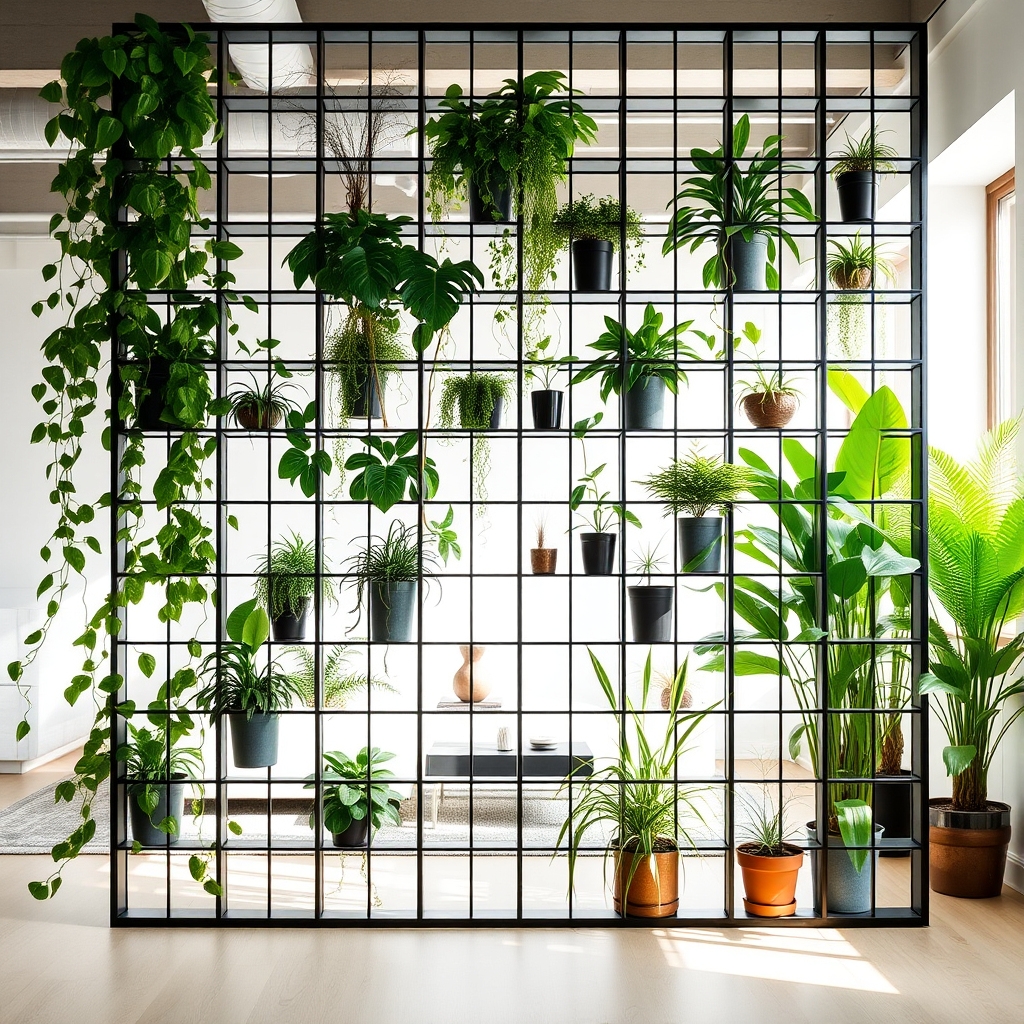
Botanical room dividers are creative plant arrangements that serve both as natural partitions and living art installations in open spaces. These vertical green installations typically consist of multiple plants arranged on shelving units, hanging systems, or freestanding frames, effectively separating different functional areas while maintaining an airy feel.
Key features include:
- Adjustable height and width configurations
- Mix of trailing and upright plants
- Combination of small and large foliage
- See-through elements that allow light flow
- Mobile or fixed installation options
Common setups incorporate:
- Metal or wooden grid frameworks
- Macramé plant hangers in rows
- Staggered floating shelves with potted plants
- Tiered plant stands
- Clear glass or acrylic dividers with mounted planters
Plants often used:
- Pothos
- Spider plants
- Boston ferns
- String of pearls
- Air plants
- Small bamboo varieties
Contemporary Plant Stand Arrangements
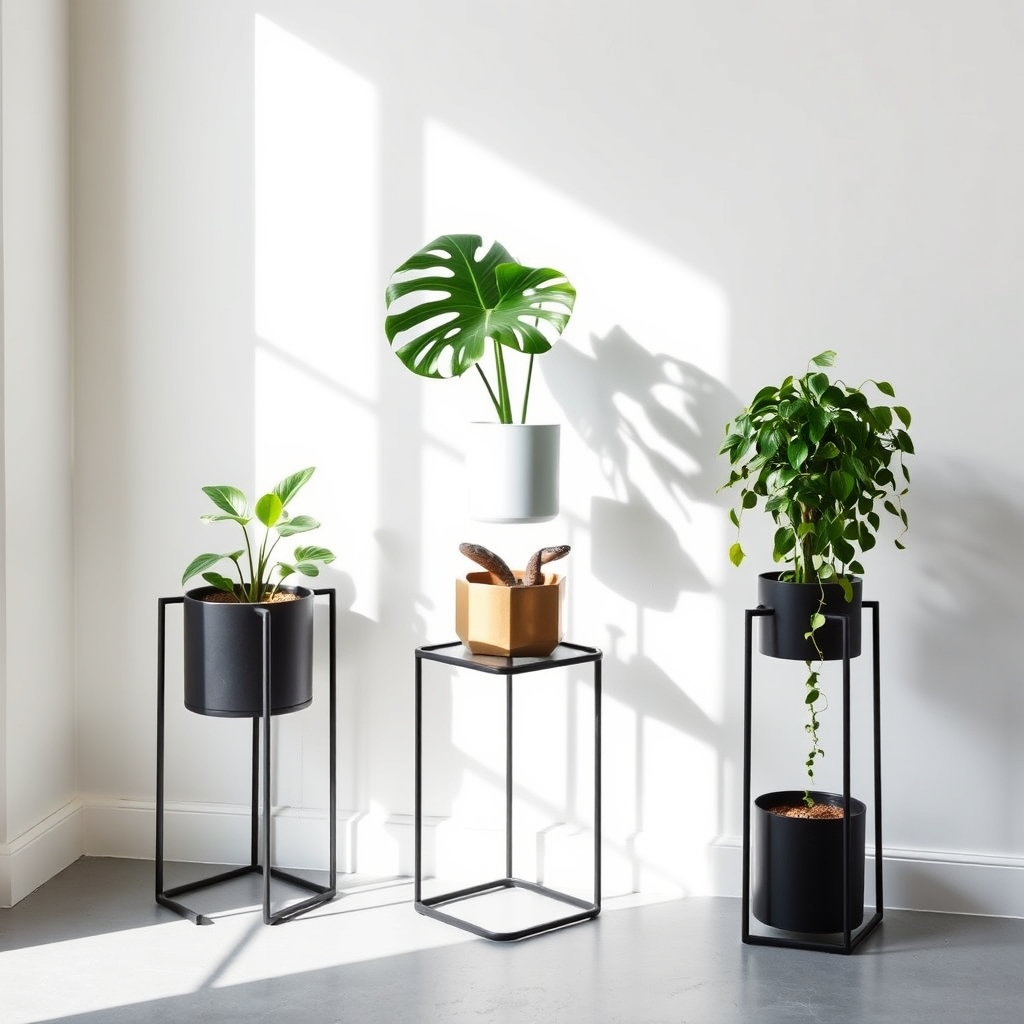
Contemporary plant stand arrangements combine sleek, modern design elements with natural greenery to create visually striking displays. These arrangements typically feature geometric stands made of materials like powder-coated metal, brass, or minimalist wood designs, often positioned at varying heights.
The stands themselves incorporate clean lines, angular shapes, or asymmetrical elements, while holding plants in stylish containers that complement the modern aesthetic.
Key characteristics include:
- Multi-tiered displays using different stand heights
- Mixed material combinations (metal, wood, ceramic)
- Monochromatic or two-tone color schemes
- Negative space as a design element
- Clustering of different plant sizes and textures
- Emphasis on vertical space utilization
- Simple, uncluttered presentation
Popular plant choices for these arrangements include snake plants, monstera, fiddle leaf figs, and trailing pothos, which add architectural interest while maintaining the contemporary look.
